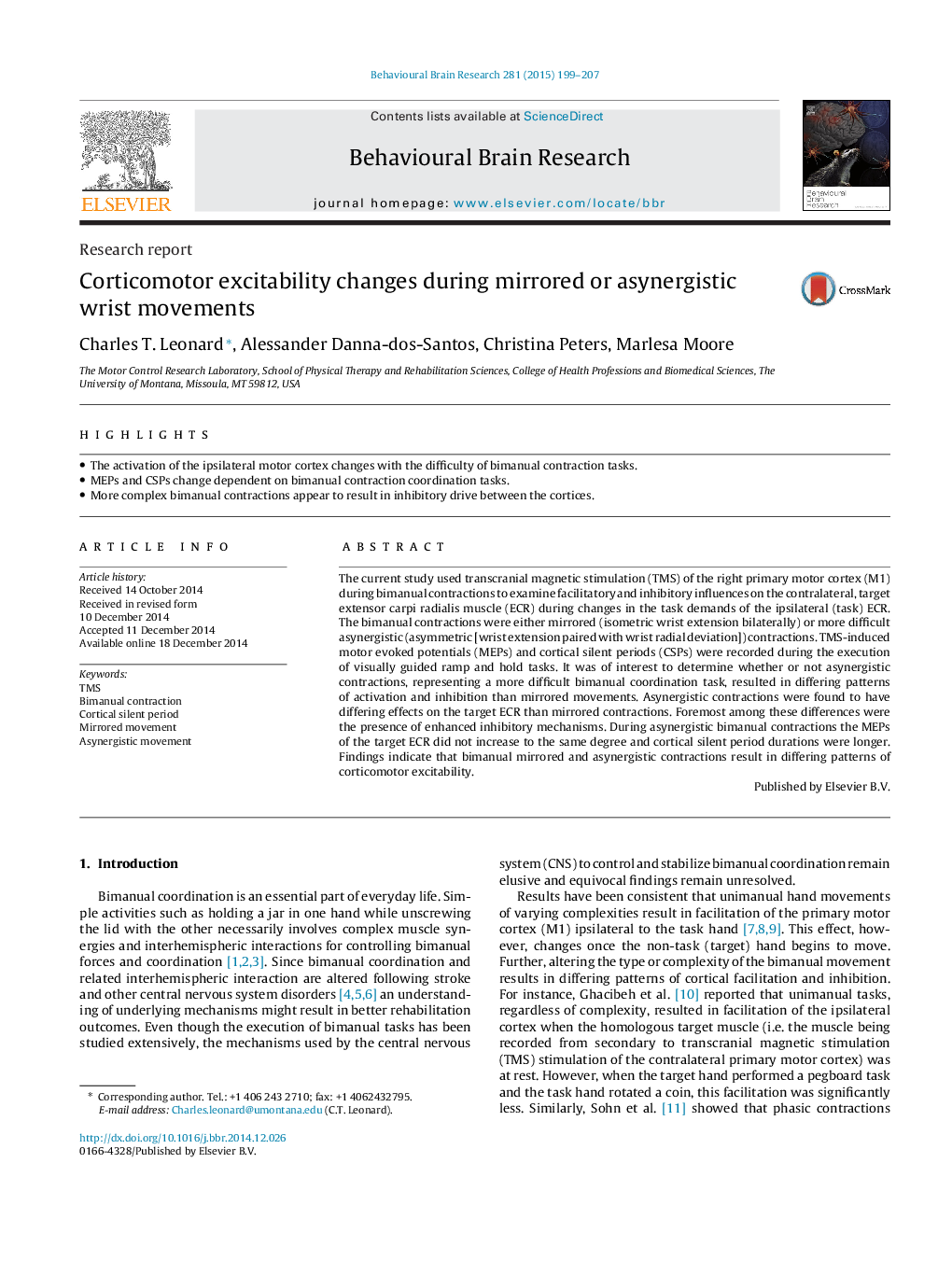| Article ID | Journal | Published Year | Pages | File Type |
|---|---|---|---|---|
| 6256998 | Behavioural Brain Research | 2015 | 9 Pages |
â¢The activation of the ipsilateral motor cortex changes with the difficulty of bimanual contraction tasks.â¢MEPs and CSPs change dependent on bimanual contraction coordination tasks.â¢More complex bimanual contractions appear to result in inhibitory drive between the cortices.
The current study used transcranial magnetic stimulation (TMS) of the right primary motor cortex (M1) during bimanual contractions to examine facilitatory and inhibitory influences on the contralateral, target extensor carpi radialis muscle (ECR) during changes in the task demands of the ipsilateral (task) ECR. The bimanual contractions were either mirrored (isometric wrist extension bilaterally) or more difficult asynergistic (asymmetric [wrist extension paired with wrist radial deviation]) contractions. TMS-induced motor evoked potentials (MEPs) and cortical silent periods (CSPs) were recorded during the execution of visually guided ramp and hold tasks. It was of interest to determine whether or not asynergistic contractions, representing a more difficult bimanual coordination task, resulted in differing patterns of activation and inhibition than mirrored movements. Asynergistic contractions were found to have differing effects on the target ECR than mirrored contractions. Foremost among these differences were the presence of enhanced inhibitory mechanisms. During asynergistic bimanual contractions the MEPs of the target ECR did not increase to the same degree and cortical silent period durations were longer. Findings indicate that bimanual mirrored and asynergistic contractions result in differing patterns of corticomotor excitability.
